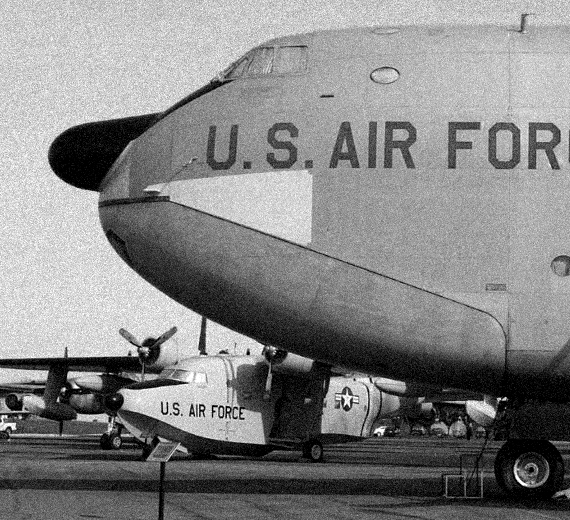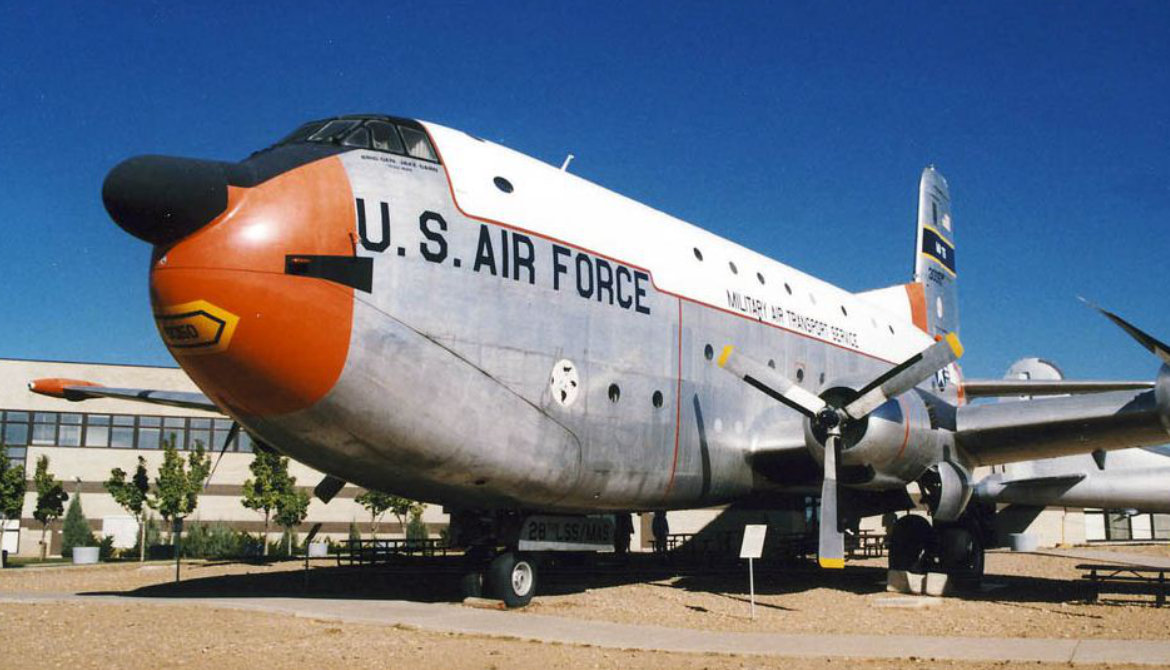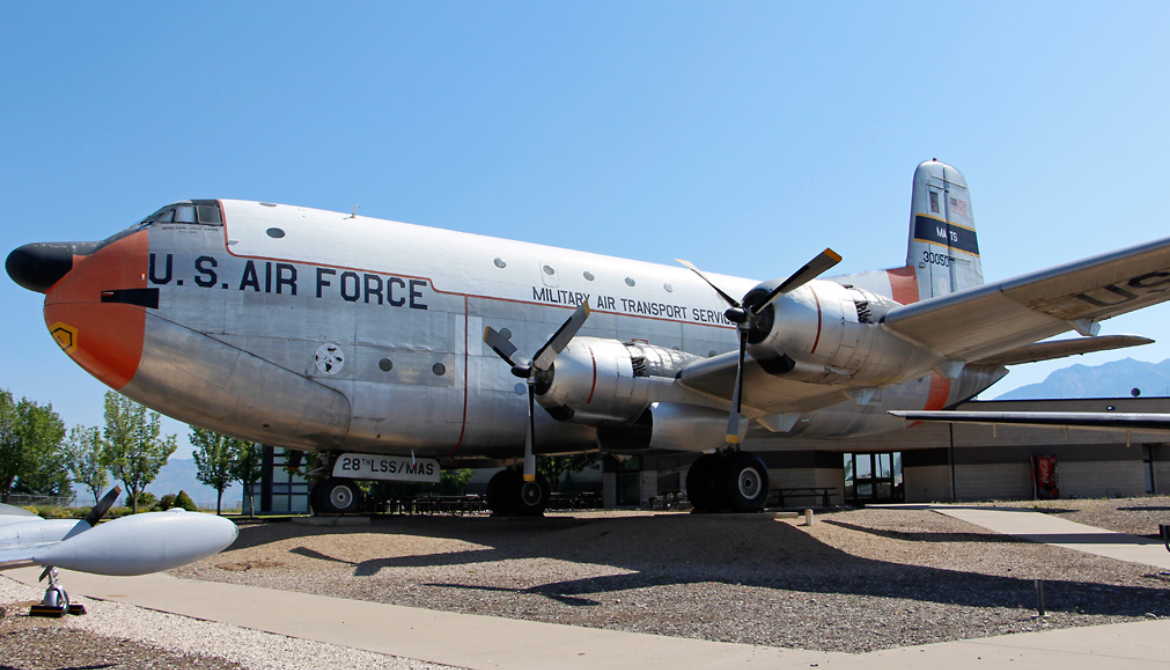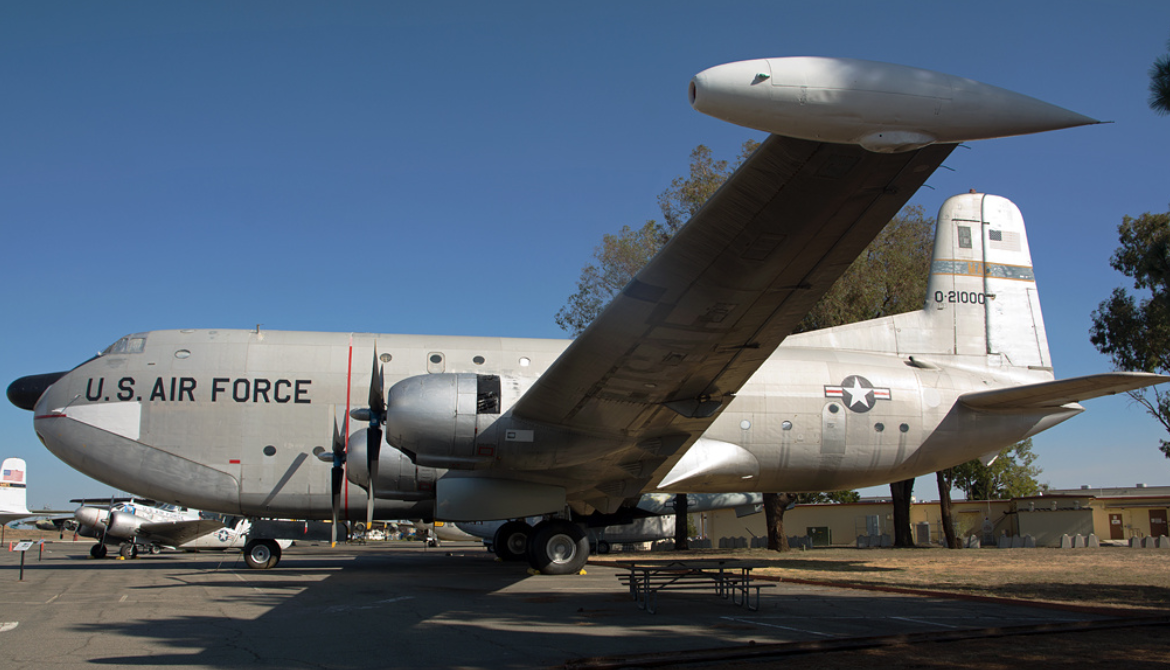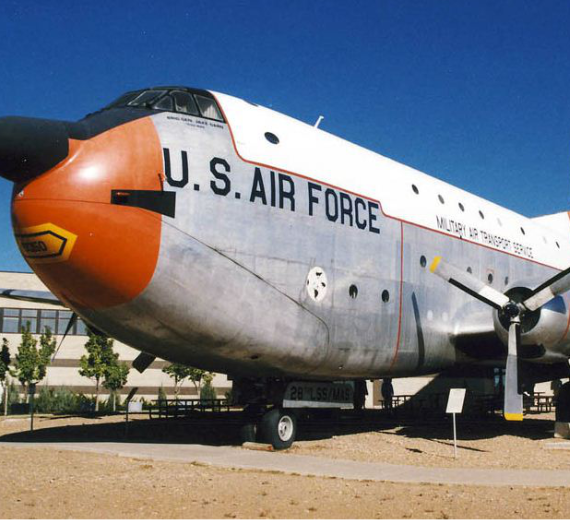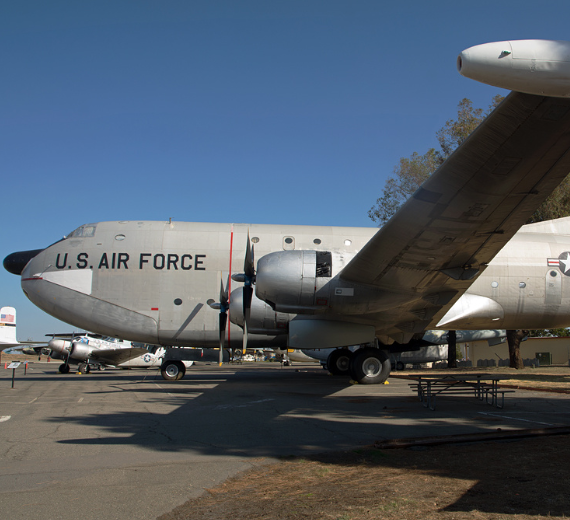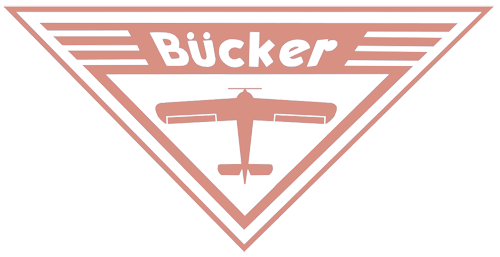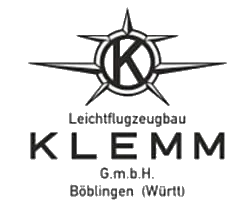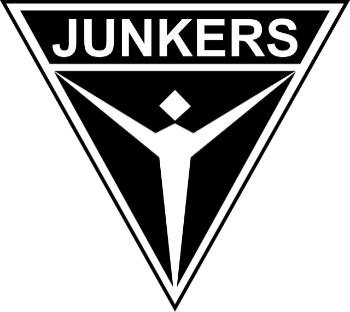Douglas
C-124A Globemaster II
Role Heavy-lift military transport aircraft
Manufacturer Douglas Aircraft Company
First flight 27 November 1949
Introduction 1950
Retired 1974 (USAF)
Primary user United States Air Force
Produced 1949–1955
Number built 448
Developed from Douglas C-74 Globemaster
Developed into Douglas C-132 (Unbuilt)
.
History
Douglas C-124A Globemaster II "Old Shaky"
First Flight 27 November 1949 Produced 1949–1955
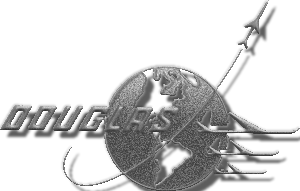
The Douglas C-124 Globemaster II, nicknamed "Old Shaky", is an American heavy-lift cargo aircraft built by the Douglas Aircraft Company in Long Beach, California.
The C-124 was the primary heavy-lift transport for United States Air Force (USAF) Military Air Transport Service (MATS) during the 1950s and early 1960s, until the Lockheed C-141 Starlifter entered service. It served in MATS, later Military Airlift Command (MAC), units of the Air Force Reserve and Air National Guard until retired in 1974.
Douglas Aircraft developed the C-124 from 1947 to 1949, from a prototype they created from a World War II–design Douglas C-74 Globemaster, and based on lessons learned during the Berlin Airlift. The aircraft was powered by four large Pratt & Whitney R-4360 Wasp Major piston engines producing 3,800 hp (2,800 kW) each. The C-124's design featured two large clamshell doors and a hydraulically actuated ramp in the nose as well as a cargo elevator under the aft fuselage. The C-124 was capable of carrying 68,500 lb (31,100 kg) of cargo, and the 77 ft (23 m) cargo bay featured two overhead hoists, each capable of lifting 8,000 lb (3,600 kg). As a cargo hauler, it could carry tanks, guns, trucks and other heavy equipment, while in its passenger-carrying role it could carry 200 fully equipped troops on its double decks or 127 litter patients and their attendants. It was the only aircraft of its time capable of transporting fully assembled heavy equipment such as tanks and bulldozers.
The C-124 first flew on 27 November 1949, with the C-124A being delivered from May 1950. The C-124C was next, featuring more powerful engines, and an APS-42 weather radar fitted in a "thimble"-like structure on the nose. Wingtip-mounted combustion heaters were added to heat the cabin, and enable wing and tail surface deicing. The C-124As were later equipped with these improvements.
One C-124C, 52-1069, c/n 43978, was used as a JC-124C, for testing the 15,000 shp (11,000 kW) Pratt & Whitney XT57 (PT5) turboprop, which was installed in the nose0
KmCeiling
0
KmCombat RANGE
0
Km/hAircraft Speed
0
Max Crew
Photo Gallery
Douglas C-124A Globemaster II "Old Shaky"
First Flight 27 November 1949 Produced 1949–1955


Douglas C-124A Globemaster II "Old Shaky"
First Flight 27 November 1949 Produced 1949–1955
General Info
-
-
- Crew: 6 or 7: Aircraft Commander, Pilot, Navigator, Flight Engineer, Radio Operator, 2 Loadmasters
- Capacity: 200 troops / 123 litter patients with 45 ambulatory patients and 15 medical staff. Maximum payload 74,000 lb (34,000 kg)
- Length: 130 ft 5 in (39.75 m)
- Wingspan: 174 ft 1.5 in (53.073 m)
- Height: 48 ft 3.5 in (14.719 m)
- Wing area: 2,506 sq ft (232.8 m2)
-
Powerplant
-
-
- Empty weight: 101,165 lb (45,888 kg)
- Gross weight: 185,000 lb (83,915 kg)
- Max takeoff weight: (88,224 kg)
- Fuel capacity: 11,128 US gal (42,120 L; 9,266 imp gal) ; 2x 30 US gal (110 L; 25 imp gal) water/alcohol tanks
- Powerplant: 4 × Pratt & Whitney R-4360-63A Wasp Major 28-cylinder air-cooled radial piston engines, 3,800 hp (2,800 kW) each with water/alcohol injection
-
Performance
- Maximum speed: 304 mph (489 km/h, 264 kn) at 20,800 ft (6,300 m)
- Cruise speed: (370 km/h, 200 kn)
- Range: 4,030 mi (6,490 km, 3,500 nmi) with 4,030 lb (1,830 kg) payload
- Ferry range: (10,980 km, 5,930 nmi)
- Service ceiling: (6,600 m)
- Rate of climb: 760 ft/min (3.9 m/s)
- Wing loading: 73.8 lb/sq ft (360 kg/m2)
- Power/mass: 0.041 hp/lb (0.067 kW/kg)
Links to Youtube & Others
The United States Air Force's Strategic Air Command (SAC) was the initial operator of the C-124 Globemaster, with 50 in service from 1950 through 1962. Four squadrons operated the type, consisting of the 1st, 2nd, 3rd and 4th Strategic Support Squadrons.
Douglas C-124A Globemaster II
One C-124C, 52-1069, c/n 43978, was used as a JC-124C, for testing the 15,000 shp (11,000 kW) Pratt & Whitney XT57 (PT5) turboprop, which was installed in the nose
Youtube Link
The Military Air Transport Service (MATS) was the primary operator until January 1966, when the organization was retitled Military Airlift Command (MAC).
